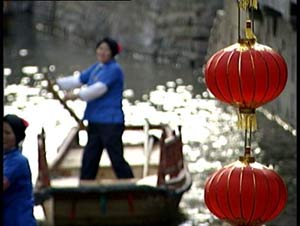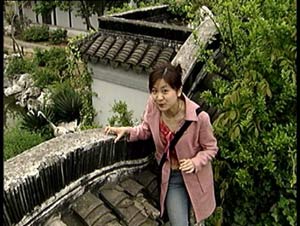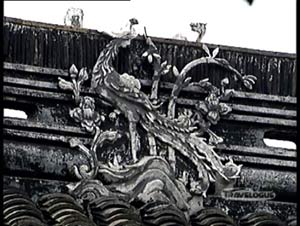Source: CCTV.com
08-02-2006 13:06

Suzhou is a city whose spirit is buried in the water. It's these water paths that form the bloodline of the city, and the water is also incorporated into the people lives. The water paths go from north to south, and east to west, forming nets or strings. And of course on that string, we have the bright, bright pears, which are the water villages we will visit today. I'm Yin, and welcome to travelogue. Lets go!
'In heaven there is paradise, on earth there are Suzhou and Hangzhou.' This commonly quoted phrase captures the idyllic landscapes of Suzhou in southern Jiangsu Province. On this trip, we'll take you to the ancient water villages of Suzhou---a real paradise on earth. The towns of Mudu, Tongli, and Luzhi, although small, lead us back to life that still retains the unique characteristics of the past. Simple and tranquil, you'll be mesmerized by the small bridges, flowing water, and charming households. Perhaps people are right when they say Suzhou is the Venice of the East, the water villages certainly speak for themselves.
Our first stop, the town of Mudu, a photographer's paradise just 10km west of Suzhou city. The town has over 2,500 years of history flowing through its waters.

Mention ancient water village and most people will tell you about the black-tiled roofs, white walls, and running waters. But if you come to Mudu, you will see something spectacular on top of that. It's the classical gardens, which are built into people's homes, right over there.
This small village of merely 34 kilometers is well-known for its classical gardens, private gardens built into residences. They are designed to model miniature natural landscapes with their ponds, trees and rocks. You might also notice the importance of walls, windows, winding paths, and doorways, which divide the garden into different sections to create a sense of mystery and surprise. In my opinion, they are masterpieces of architecture.

One place to visit is the famous Pheonix tower, a former residence. The residence almost appears to be a work of art, with carvings engraved at every corner, bottom to top. Walking through the hallways, you see that nothing is simply designed, the railings, window frames are all beautiful built. Why is it called phoenix tower? Well, you might find the carvings of phoenixes. The phoenix represents prosperity and good luck. The other carvings also tell stories of their own, depicting people and the events of their lives.
But of course, detailed carvings aren't limited to architecture. Another traditional form of art are 'carvings on cloth,' better known as embroidery.

